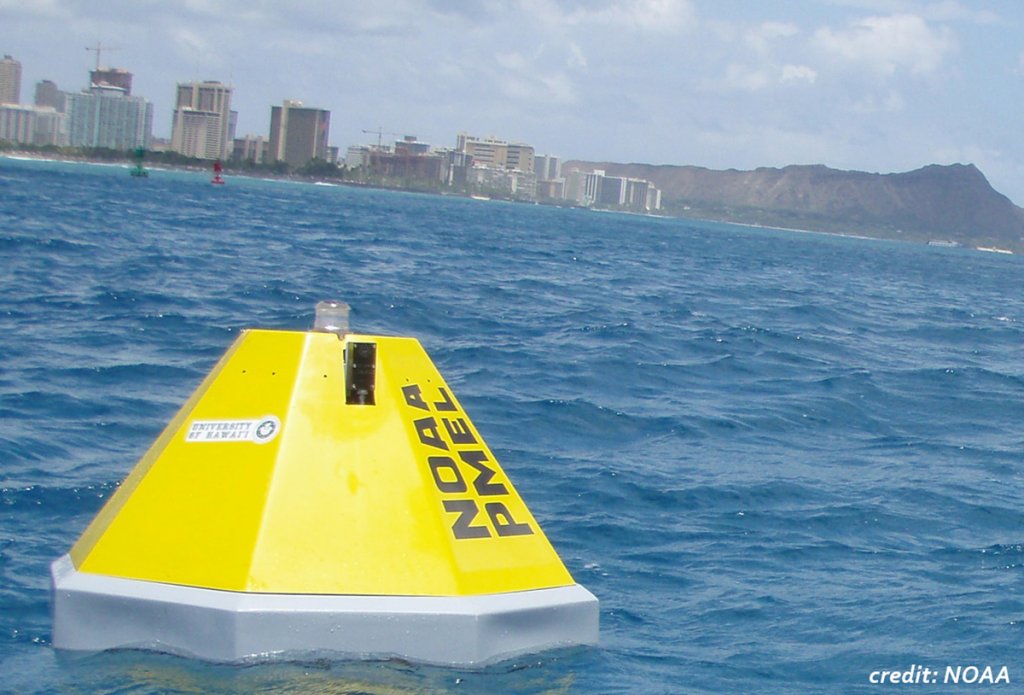Ocean Acidification Monitoring Network: Oʻahu, Hawaiʻi
PRINCIPAL INVESTIGATOR: Eric DeCarlo
Co-INVESTIGATORS: Michael Guidry, Fred Mackenzie
Graduate Trainee: Gerarda Terlouw

The Ocean Acidification Monitoring Network program has examined the biogeochemistry of the water column and waters within the carbonate sediments in Kāneʻohe Bay and on the south shore of Oʻahu. Our study has recorded the impact of biological processes such as photosynthesis by algal communities and the subsequent decomposition of organic matter upon the death of phytoplankton and zooplankton and the production of and dissolution of carbonate minerals. These processes occur mostly in the water column but also within the waters in the sediment on the barrier reef of Kāneʻohe Bay and at fringing reef sites off Honolulu. We have also examined how physical forces (waves, tides, winds, currents) impact CO2 exchange between the ocean and atmosphere. Because carbon dioxide is an important greenhouse gas, whose concentration in the atmosphere is increased substantially by burning fossil fuels and other human activities, there is much interest in the scientific community in understanding how tropical coral reef environments behave and whether they represent sources or sinks of this gas to/from the atmosphere. Our work (begun in November 2005) has produced the longest continuous time series of CO2 data in coastal coral reef environments worldwide. Other NOAA/PMEL CO2 monitoring systems exist on coral reefs in Bermuda, the Florida Keys, Puerto Rico (Atlantic Ocean) and stations on the Great Barrier Reef of Australia, and in Chuuk, Federated States of Micronesia . We have found that variability in weather and climatic patterns affect coastal biogeochemistry in multiple ways and drive primary productivity and phytoplankton blooms, coral calcification (production of hard calcium carbonate skeletons), and alter the concentration of CO2 in seawater. These processes affect the transfer of CO2 between the ocean and atmosphere. We are now better able to constrain the importance of biogeochemical cycles on the CO2 system and the role that winds, waves and tides play in the transfer of this gas between the ocean and the atmosphere. Additionally, we know that extreme weather events cause important and rapid, but generally temporary, impacts on the CO2 system and understand that wide reefs such as the barrier reef of Kāneʻohe Bay are complex systems in which the interplay of biology, chemistry, physics and climatic conditions lead to large changes in the day to day transfer of CO2 between ocean and atmosphere. Data from our network of CO2 buoys is available at several websites maintained by our collaborators at NOAA/PMEL (http://www.pmel.noaa.gov/co2/story/Coral+Reef+Moorings). Although very large variations in CO2 have been observed both at and between the different reef environments we are studying, coastal reef waters in Hawaiʻi largely release CO2 to the atmosphere, contrary to what is observed in much of the tropical and temperate global open ocean, where the ocean absorbs atmospheric CO2. Furthermore, we have found that water on the reefs (i.e., water column) is driven into and out of sediments and the so called “porewater” has a chemistry that is strongly influenced by microbial activity that leads to dissolution of carbonate sediments. This is a relatively understudied aspect of ocean acidification research and has great importance regarding how the balance of production and destruction of carbonate minerals impact the overall stability of coral reef platforms.

